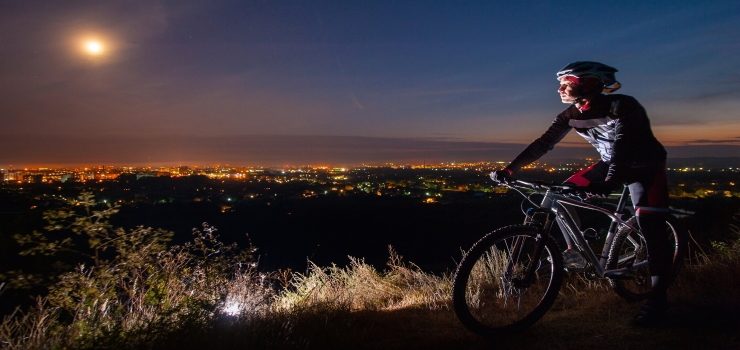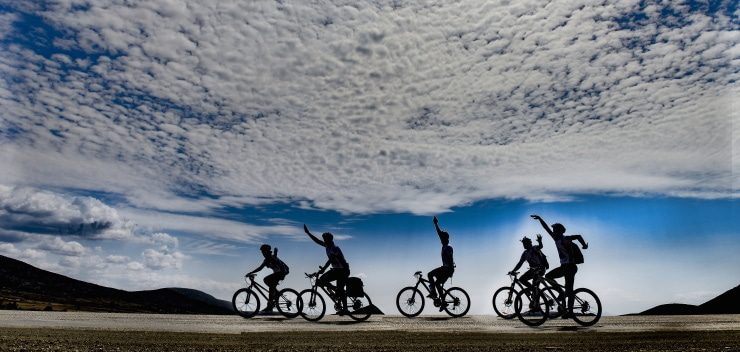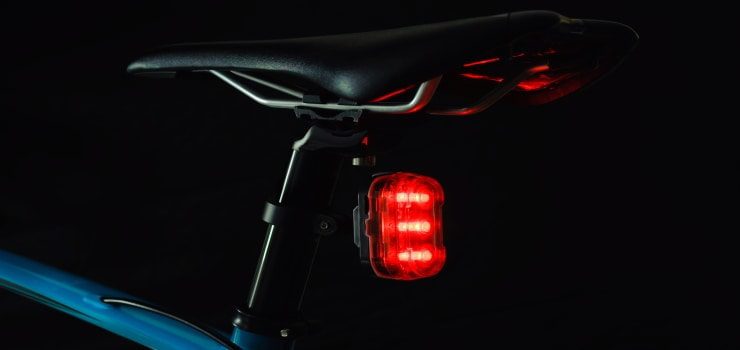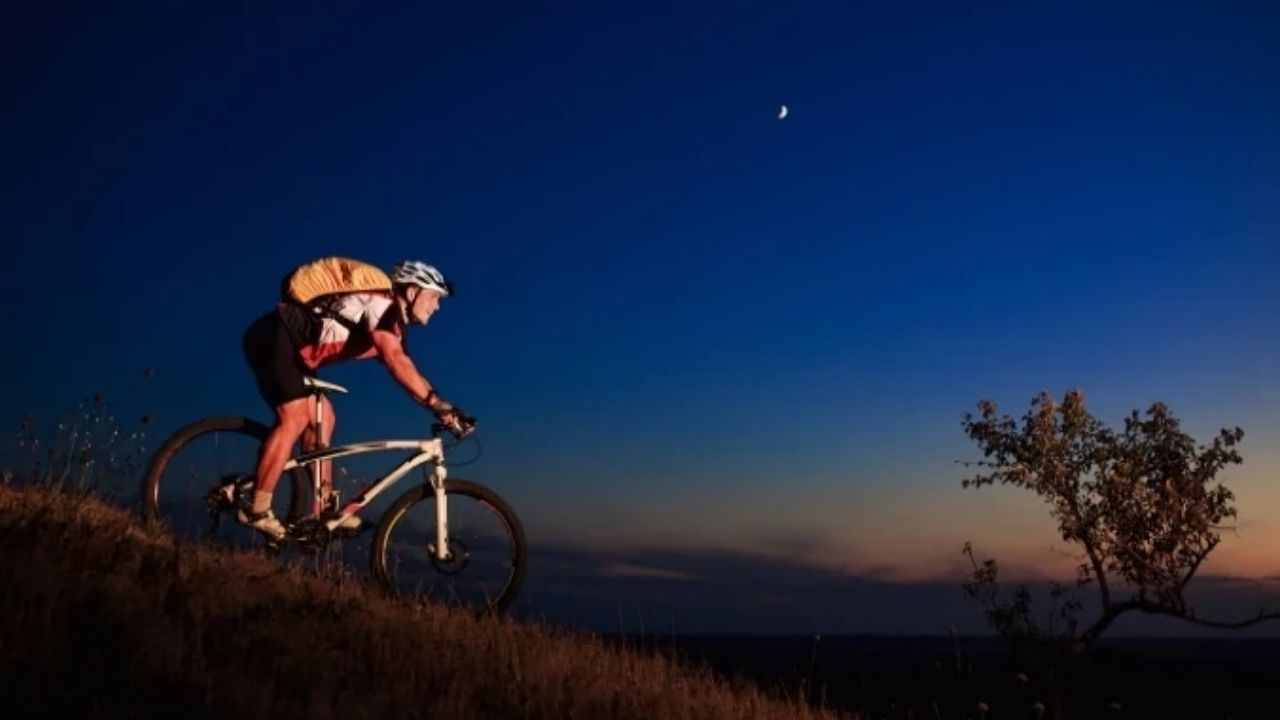Mountain biking at night can be an exhilarating experience. At night, familiar trails that have been ridden many times can become exciting again. Riding a mountain bike at night causes you to actively focus on the trail surface, adding a new dimension to your trail riding.
However, if you are new to riding at night, heading out in the dark can be an intimidating experience. Here are a few helpful tips to make the experience safer, more rewarding, and help you feel less nervous about what can be a fun experience.
Page Contents
Thorough Preparation
Gearing up, setting your suspension, and mounting lights to your bike in the dark away from any town lights can be a challenge. Get to the trail before sunset, so you don’t have to fumble around in the dark. You can also prepare at home.
Another reason to prepare thoroughly for night riding to prevent yourself from getting stranded far from other people or help. Items to take with you on your night ride should include a cell phone, fully charged lights, a multi-tool, spare tube, and CO2.
Lastly, plan where you want to go and stick to trails that you know well. The dark can warp your perception of distance and direction, and you may get lost. Studying a map of the trail and making yourself aware of any wildlife concerns in the area can also be helpful.
Dress for Night Biking

Dressing properly for night conditions is important as trail conditions are significantly different than they are during the day. It is generally colder at night, so add a layer of extra clothing to conserve body heat. Windproof gilets or a softshell jacket may be sufficient to protect you from wind chill, but you should check the forecast before heading out.
At night, dew formation on vegetation can drench your legs and feet, especially when riding over longer distances. Wear waterproof pants or socks to keep dry and comfortable.
Protective clothing and gear are crucial when mountain biking at night as low visibility increases your risk of falling. If you are riding a popular trail or roads that motorists may use, it is incredibly important to wear high-visibility clothing.
Light Management
When you start riding, it may be tempting to adjust your lights to the brightest setting. However, a brighter setting will deplete your battery faster, and you may find yourself stranded in the dark over the course of a long rid.
Start at a low brightness level so your eyes can adjust to the dark. If the trail becomes challenging or you find that it is too dark, you can increase the brightness level. If you start at a high setting, lowering it to save battery life can be dangerous as your eyes need time to adjust to the lower visibility.
Ideally, you should have two lights: one mounted on your handlebar and one on your helmet. If you ride on a fast or technical trail, use both lights. For climbs or smoother trails, consider switching off your helmet light completely to save battery power.
Ride with a Group

Riding with a group adds a social component to mountain biking at night and can make for a more enjoyable experience. Riding with others is also safer than taking on treacherous trails on your own. If you fall, you want someone nearby to help you up, assist you in getting back to your car, calling for help, or administering first aid.
If you prefer riding on your own, tell someone where you are going and when you will be back. You should also have a fully charged phone with you so you can call for help if necessary.
Battery Life Management
There are several things you can do to optimize your bike’s battery life, the most significant being sticking to the lowest possible brightness settings as we mentioned above.
Lithium-ion batteries tend to lose their capacity in cold conditions. If your light unit has an integrated battery, this is usually not a problem since the bulb’s heat keeps the battery warm. However, in freezing conditions you may have to insulate a separate cell by placing it under your clothing or in your bag.
Rear Light

Using a rear light on your mountain bike is a good idea when riding a trail with other at night. A backlight makes it easier for your companions to follow you. On the road, a rear light is critical for motorists can see you.
Set your rear light to solid mode instead of blink mode to make it easier on your fellow rider’s eyes. Because your backlight is not crucial to your visibility, select a dim setting, so it is visible, but not blinding to others.
